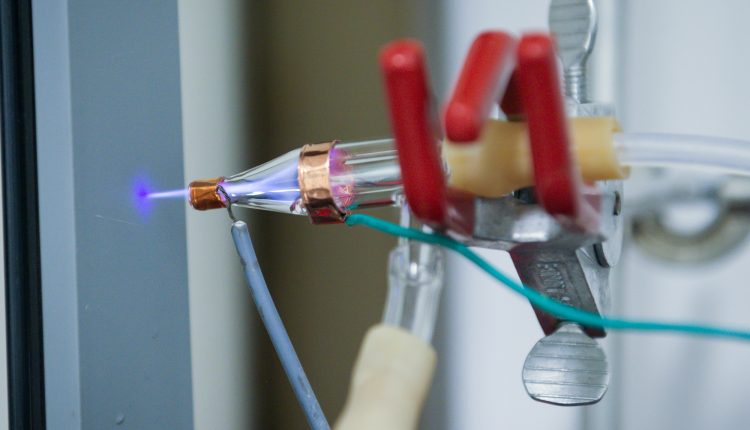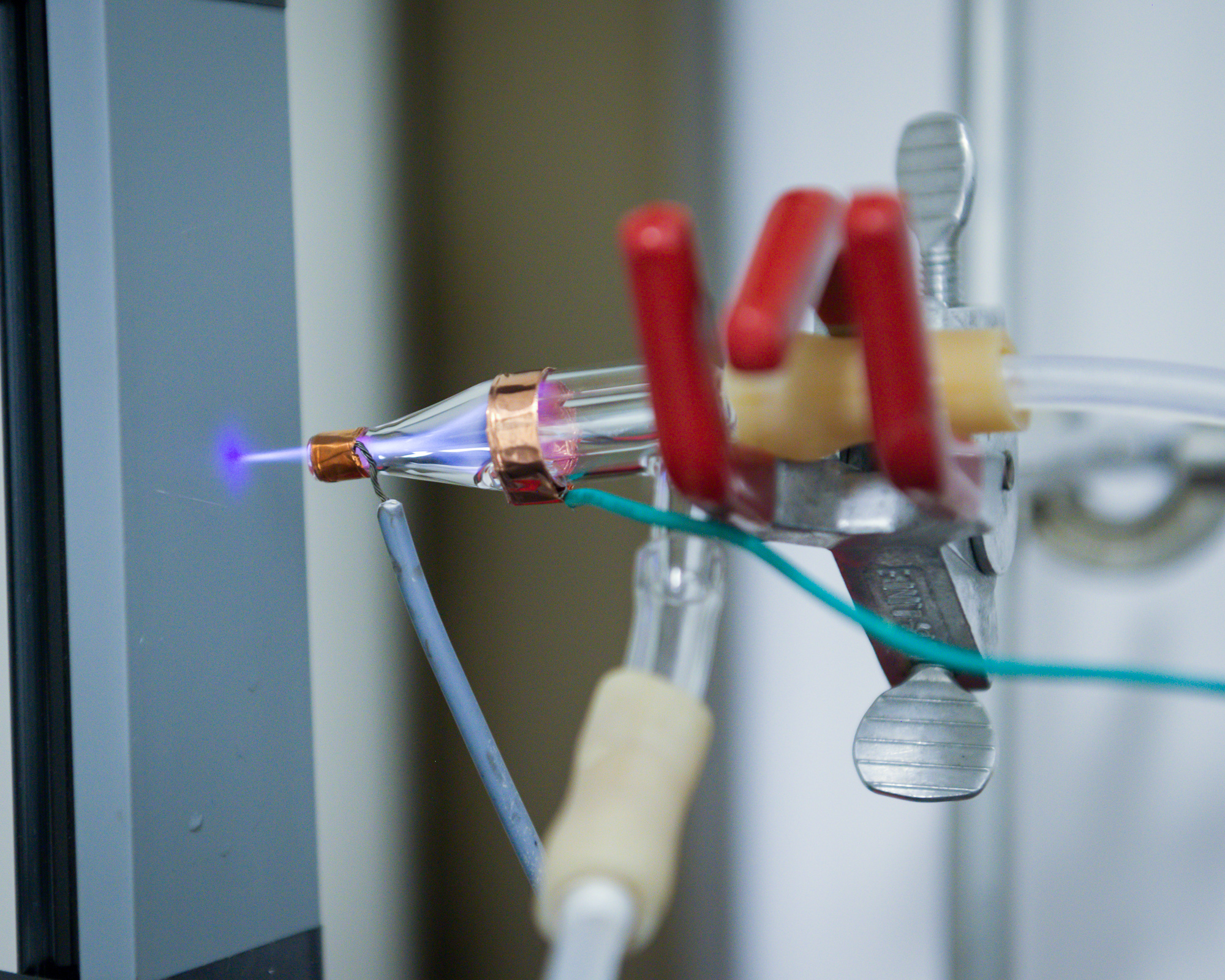
Astronauts will print plasma sensors in space to monitor health on long missions
With NASA and other private space companies already set to undertake a manned mission to Mars, scientists are working diligently to make sure no detail goes overlooked. One such detail — an important one — is how astronauts will breathe, eat and track their health.
“There’s no doubt that the transportation is taken care of. The spacecraft will be developed,” said Ram Gandhiraman, a scientist with Universities Space Research Association at NASA Ames Research Center. “But how are you going to sustain astronauts for one year or more? Equipment wears out, and supplies need replenished. This is work that also needs to be done.”

In order to prepare for this, the scientist is working on a printer that will let astronauts create materials in space using a jet of plasma, which is an energized gas of free electrons and ions.
The plasma jet can spray tiny semiconductor particles onto inexpensive, flexible surfaces like paper or cloth, to form wearable electronic circuits. Astronauts will be able to use these sensors to track their health, as well as the environment.
The small semiconductors contained within the sensor will be able to detect biomolecules, such as dopamine and serotonin, as well as gases like ammonia in the environment.
NASA teamed up with scientists from SLAC’s Stanford Synchrotron Radiation Lightsource (SSRL), a DOE Office of Science User Facility to look at the fine details of the sensors’ surfaces, which will allow them to optimize the process for printing sensors with the same quality every time.
The scientists used X-ray spectroscopy to tailor the materials traveling through the plasma and control how they deposit on a surface.
“These techniques allow us to see what chemical groups are present at the surface of the fabricated sensors,” said Dennis Nordlund, SLAC scientist. “This allows us to extract information about the material on an element-by-element basis, including the part of the chemical structure responsible for reactivity and the content of graphitic carbon – an important form of carbon that conducts well – present in the samples.”
The plasma-printed nanomaterial forms a dense network of sensor and signal amplification materials better than other printing methods, including screen or aerosol printing. Plasma printing is also operational at low temperatures, which means the paper or cloth is not destroyed during the process.
When used in space, the fabrication technology would allow astronauts to create the sensors whenever they needed them. To make the printer functional for space use though, the researchers needed to ensure that the plasma jet was lightweight and easy-to-assemble.
“This printer should be able to use both Martian resources and waste or spent materials to fabricate devices on-demand in space,” said Gandhiraman.
In demonstrations, the scientists use a valve to allow gas to travel through a plastic tube. The gas meets a liquid that contains carbon nanotubes, to create a mist that is zapped with electricity flowing between two electrodes. This creates charged plasma.
The plasma’s excited electrons emit light, and the color depends on the composition of the gas. For now, it’s a blue helium glow.
When the printer is used in the lab, the gas comes from a canister, but in space, the Martian atmosphere will provide the needed gas — and instead of plugging the device into an outlet, solar panels will provide the power needed.
Regarding gravity differences between the two environments, the researchers say that plasma is best because no matter which environment you’re in, the electric field will drive the jet through the nozzle.”
The NASA team plans to collaborate with SLAC to develop even more applications for the plasma jet. The researchers have already revealed that the jet can be used for sterilizing equipment. Next, they will develop a way to use microbes to recycle metals needed for electronics during long-term missions.
Story via SLAC/ Stanford.

Comments are closed, but trackbacks and pingbacks are open.